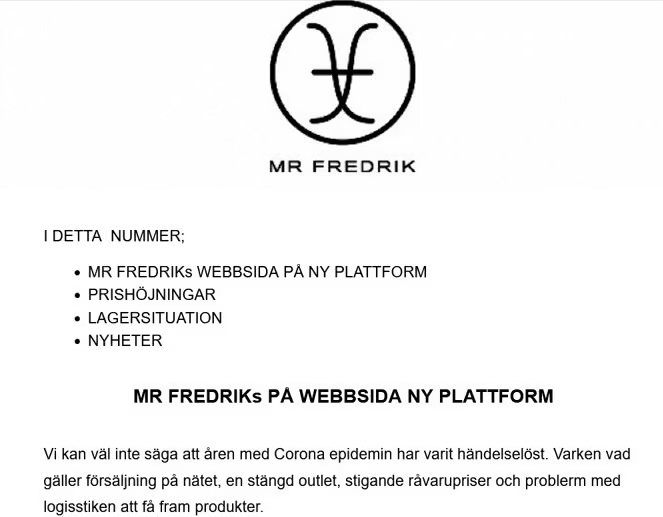OUR FORGED FURNITURE PRODUCTION PROCESS AND CERTIFICATIONS
OUR WROUGHT IRON SUMMER FURNITURE - THEIR MANUFACTURING PROCESS AND MORE*
Below, for those who want to delve into the production of our wrought iron furniture, you'll find more information on how the process works, the various steps involved, and the different certifications that our furniture and manufacturers adhere to.
The Steel
We use carbon steel - it's a type of steel alloy mainly composed of iron and carbon, with traces of other elements like manganese, silicon, sulfur, and phosphorus. Carbon steel is one of the most used materials in manufacturing and construction industries due to its versatility, strength, and affordability. Here are some key characteristics and properties of carbon steel:
Carbon Content: Carbon steel contains varying levels of carbon, typically ranging from 0.05% to 2.0% by weight. The carbon content affects the steel's hardness, strength, and other mechanical properties.
Strength and Hardness: Carbon steel is known for its high strength and hardness, making it suitable for applications requiring structural integrity and load-bearing capacity. Higher carbon content generally results in increased strength and hardness.
Malleability and Ductility: Carbon steel can be easily shaped, formed, and machined through processes like forging, rolling, and welding. It exhibits good ductility, allowing it to deform without fracturing under tensile load.
Weldability: Carbon steel is weldable using various welding techniques, making it suitable for manufacturing and construction applications. However, some precautions may be necessary to avoid weld defects and maintain the steel's mechanical properties.
Corrosion Resistance: Although carbon steel is susceptible to corrosion, especially in harsh environments or when exposed to moisture and chemicals, its resistance can be enhanced through surface treatments like painting, galvanizing, or applying protective coatings.
Variants: Carbon steel is available in different grades and types, including low carbon steel, medium carbon steel, and high carbon steel. Each grade has specific characteristics and applications based on its carbon content and alloying elements.
Applications: Carbon steel is used across a wide range of industries and applications, including structural components, machine parts, vehicle components, pipelines, construction materials, tools, cutlery, and kitchen utensils.
Carbon steel is valued for its strength, durability, and cost-effectiveness, making it a preferred choice for many engineering and manufacturing purposes. However, its susceptibility to corrosion in certain environments may require additional protection or the use of alternative materials like stainless steel in corrosive or high-temperature applications.
We only use steel produced in the EU.
First, we employ electro-galvanizing, also known as electroplating or electrolytic galvanizing, a process to coat steel or iron with a thin layer of zinc to protect the underlying metal from corrosion. This involves the use of an electrolytic cell to deposit zinc onto the surface of the steel or iron substrate. Here's a simplified explanation of the electro-galvanizing process:
Surface Preparation: The steel or iron parts are thoroughly cleaned to remove contaminants such as dirt, grease, rust, or scale. Surface preparation is crucial to ensure proper adhesion of the zinc coating.
Electrolyte Bath: The cleaned parts are immersed in an electrolyte solution containing zinc ions. The parts act as the cathode (negative electrode), while a zinc anode (positive electrode) is also placed in the solution.
Application of Electric Current: A direct electric current is applied to the electrolyte bath. As the current flows, zinc ions in the electrolyte migrate towards the negatively charged metal pieces (cathodes).
Zinc Deposition: When zinc ions reach the surface of the steel or iron parts, they undergo reduction and are deposited as a thin layer of metallic zinc. This process forms a uniform and adherent zinc coating on the product.
Control and Post-treatment: The thickness of the zinc coating can be controlled by adjusting the duration and intensity of the electric current. Once the desired thickness is achieved, the coated parts are removed from the electrolyte bath, rinsed to remove excess electrolyte, and then dried.
The resulting zinc coating provides effective corrosion protection for the steel or iron substrate. Zinc acts as a sacrificial anode, meaning it corrodes preferentially compared to the underlying metal, thus protecting it from oxidation and rusting.
Electro-galvanizing is commonly used in various industries where corrosion resistance is critical, such as automotive manufacturing, construction, appliances, and electrical components. It offers advantages such as uniform coating thickness, excellent adhesion, and the ability to coat complex shapes and surfaces. Moreover, it is an environmentally friendly process compared to some other coating methods, as it does not involve the use of strong chemicals or solvents.
Next, we use - Powder Coating
Powder coating is a dry surface finishing process commonly used to apply a durable, protective coating to various materials, typically metals. It involves applying a fine powder consisting of resins, pigments, and other additives onto a surface. The powder is electrostatically charged, allowing it to adhere to the grounded object. After application, the coated object is heated in an oven, where the powder melts and forms a smooth, uniform, and durable surface coating.
Powder coating offers several advantages over traditional liquid paint and other surface treatment methods:
Durability: Powder coating creates a durable surface coating that is more resistant to chipping, scratching, fading, and corrosion compared to liquid paint. This makes it ideal for applications where the coated object will be exposed to tough conditions or frequent use.
Environmental Friendliness: Powder coating is an environmentally friendly surface treatment method because it does not contain solvents or emit volatile organic compounds (VOCs), which are harmful to the environment and human health. It also produces less waste because excess powder can be collected and reused.
Versatility: Powder coating can be applied to a wide variety of materials, including metals (such as steel, aluminum, and cast iron), plastics, wood, and composites. It is available in a large selection of colors, textures, and finishes, including glossy, matte, metallic, textured, and wrinkled surfaces, offering design flexibility for various applications.
Cost-effectiveness: Although initial equipment and installation costs for powder coating may be higher compared to liquid painting, the overall cost can be lower in the long run due to reduced material waste, higher transfer efficiency, and lower labor costs. Additionally, the durability of powder coating can result in longer-lasting surface coatings, reducing the need for frequent repainting or maintenance.
Uniformity and Consistency: The electrostatic application process of powder coating ensures a uniform and consistent coating thickness, even on complex shapes and surfaces. This results in a high-quality surface finish with minimal imperfections and provides a professional appearance.
Faster Production Time: Powder coating typically requires fewer application steps and drying times compared to liquid painting, leading to faster production turnaround times. Additionally, the curing process for powder coating is quicker, allowing for faster handling and packaging of finished products.
Chemical and Weather Resistance: Powder coating exhibits excellent resistance to chemicals, including fuels, oils, solvents, and cleaners, as well as to weather exposure, UV radiation, and extreme temperatures. This makes it suitable for outdoor applications and industries where chemical resistance is required.
Overall, the advantages of powder coating make it a popular choice for a wide range of industries and applications, including the automotive industry, aerospace industry, architecture, furniture, appliances, electronics, and sports equipment.
The paint we use is polyester and polyester-polyurethane.
Polyester and polyester-polyurethane paints are types of powder coatings that contain polyester and/or polyurethane resins as main components. Here's a brief overview of these two types of paints:
Polyester Paints: Polyester paints are primarily based on polyester resins. They are characterized by excellent resistance to weather conditions, UV radiation, and corrosion. They are also easy to apply and offer a wide range of colors and surface finishing effects, such as matte, glossy, or textured surfaces. Polyester paints are often used for painting exterior elements, such as garden furniture, architectural elements, or steel structures.
Polyester-Polyurethane Paints: Polyester-polyurethane paints combine the properties of polyester and polyurethane resins. They provide excellent resistance to weather conditions, UV radiation, and corrosion, similar to polyester paints. At the same time, the addition of polyurethane resins can enhance resistance to wear, scratches, and aggressive chemical agents. Polyester-polyurethane paints are often used in challenging conditions, such as outdoors on buildings, metal structures, or in the automotive industry.
In both cases, polyester and polyester-polyurethane powder coatings are a popular choice due to their durability, weather resistance, and aesthetics, making them suitable for many different industries and applications.
We have ISO 14001, which is an international standard developed by the International Organization for Standardization (ISO) that specifies requirements for an environmental management system (EMS). It provides a framework for organizations to establish, implement, maintain, and continuously improve their environmental management practices.
Here are the key components and principles of ISO 14001:
Environmental Policy: Organizations must establish and communicate an environmental policy that reflects their commitment to environmental protection and compliance with relevant laws and regulatory requirements.
Planning: Organizations identify environmental aspects of their activities, products, and services, as well as potential environmental impacts. They set environmental objectives and targets to address significant environmental aspects and establish plans to achieve them.
Implementation and Operation: Organizations implement operational controls and procedures to effectively manage their environmental impacts. This may include training employees, establishing communication procedures, and ensuring compliance with environmental legislation.
Monitoring and Corrective Action: Organizations monitor and measure their environmental performance, evaluate compliance with laws and other requirements, and take corrective actions to address non-conformities and prevent their recurrence.
Management Review: Management regularly reviews the organization's environmental management system to ensure its continued suitability, adequacy, effectiveness, and alignment with the organization's strategic goals.
ISO 14001 is applicable to all organizations, regardless of size, type, or industry sector. It is designed to be flexible and adaptable to the specific needs and circumstances of each organization. ISO 14001 can be integrated with other management systems, such as quality management (ISO 9001) and occupational health and safety management (ISO 45001), to create a more comprehensive and integrated management approach.
Achieving ISO 14001 certification involves undergoing an independent audit by a third-party certification body to verify that the organization's environmental management system meets the requirements of the standard. Certification demonstrates the organization's commitment to environmental responsibility, compliance with regulations, and continuous improvement of environmental performance.
Overall, ISO 14001 helps organizations minimize their environmental impacts, reduce pollution, conserve resources, improve efficiency, enhance their reputation, and meet stakeholders' expectations regarding environmental responsibility.
We have ISO 9001:2015 certification, which is an international standard developed by the International Organization for Standardization (ISO) that specifies requirements for a quality management system (QMS). It provides a framework for organizations to establish, implement, maintain, and continuously improve their quality management practices.
ISO 9001:2015 follows the high-level structure (HLS) defined by ISO, which aligns the structure and core requirements of management system standards to facilitate integration and consistency across different management disciplines.
Key components and principles of ISO 9001:2015 include:
Context of the Organization: Organizations are required to understand the internal and external factors that can affect their ability to achieve desired results, as well as the needs and expectations of relevant stakeholders.
Leadership: Management is responsible for establishing a quality policy, ensuring its alignment with the organization's strategic direction, and demonstrating leadership and commitment to quality by fostering a culture of quality throughout the organization.
Planning: Organizations must establish quality objectives at relevant functions and levels, develop plans to achieve these objectives, and identify and address risks and opportunities that may affect the QMS and its ability to deliver compliant products and services.
Support: Organizations must provide necessary resources, infrastructure, and support to ensure the effectiveness of the QMS, including competent personnel, adequate training, and appropriate communication channels.
Operation: Organizations are required to plan, implement, and control processes to ensure consistent delivery of products and services that meet customer requirements and applicable statutory and regulatory requirements.
Performance Evaluation: Organizations must monitor, measure, analyze, and evaluate QMS performance, including customer satisfaction, process performance, product conformity, and the effectiveness of quality objectives.
Improvement: Organizations must continuously improve the suitability, adequacy, and effectiveness of the QMS by taking corrective actions to address non-conformities and prevent their recurrence, as well as by implementing preventive actions to eliminate the root causes of potential problems.
ISO 9001:2015 is applicable to all organizations, regardless of size, type, or industry sector. It is designed to be flexible and adaptable to the specific needs and circumstances of each organization. Achieving ISO 9001 certification involves undergoing an independent audit by a third-party certification body to verify that the organization's QMS meets the requirements of the standard.
Overall, ISO 9001:2015 helps organizations improve customer satisfaction, enhance process efficiency, reduce waste and defects, improve product quality and reliability, and drive continuous improvement in their operations and performance.
We have eliminated plastic film and foam for furniture packaging. They have been replaced by reusable protectors, which not only safeguard the furniture during transportation but also serve for furniture storage during the autumn-winter season. Additionally, our products are manufactured within the EU, ensuring short transports.

 Svenska
Svenska
 Français
Français
 Deutsch
Deutsch



